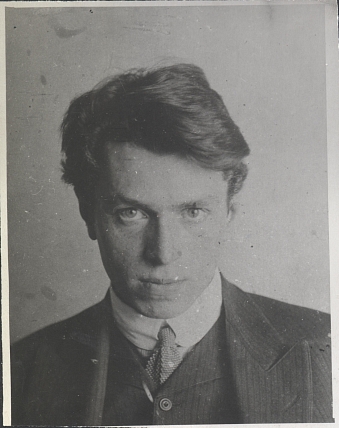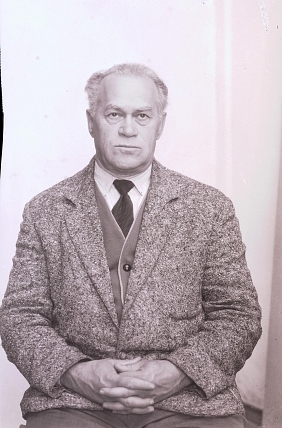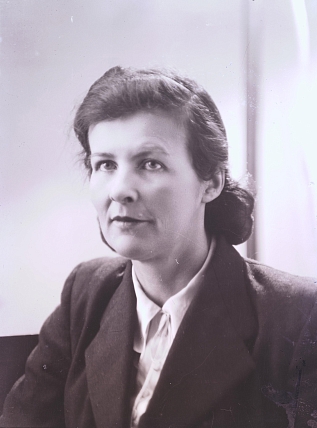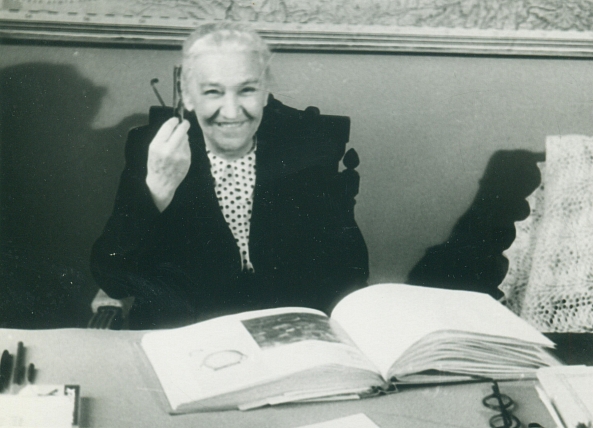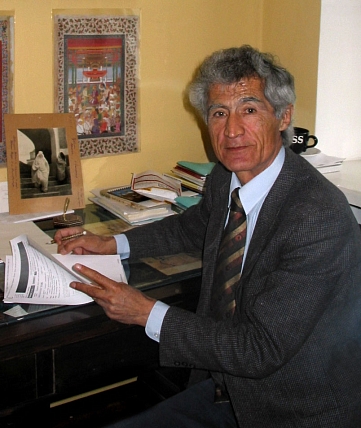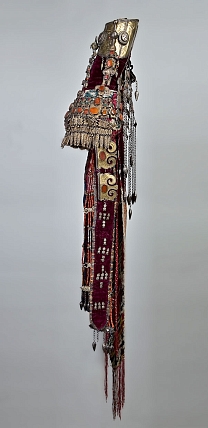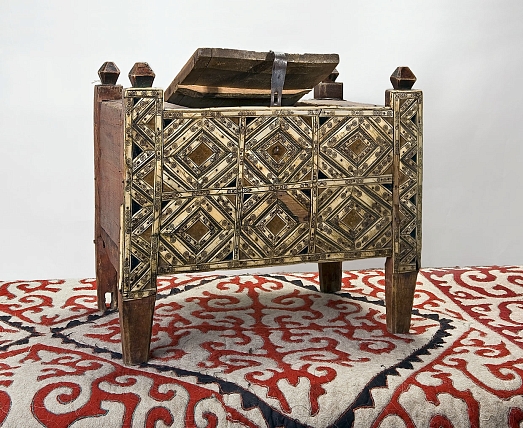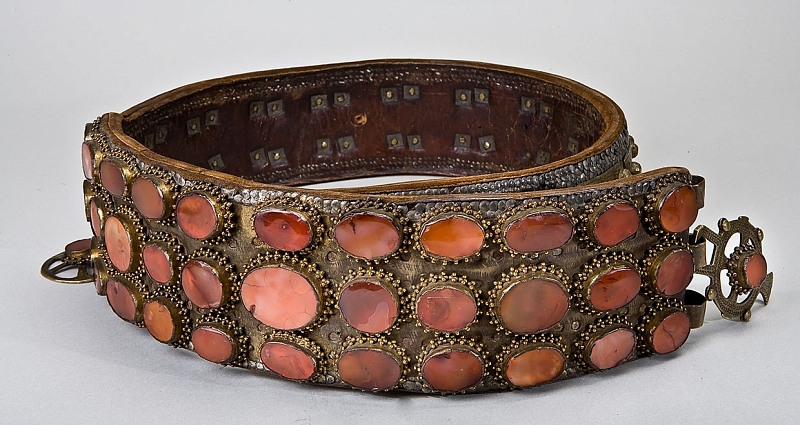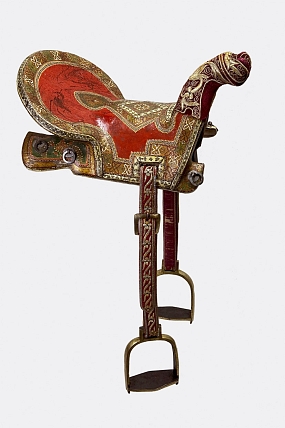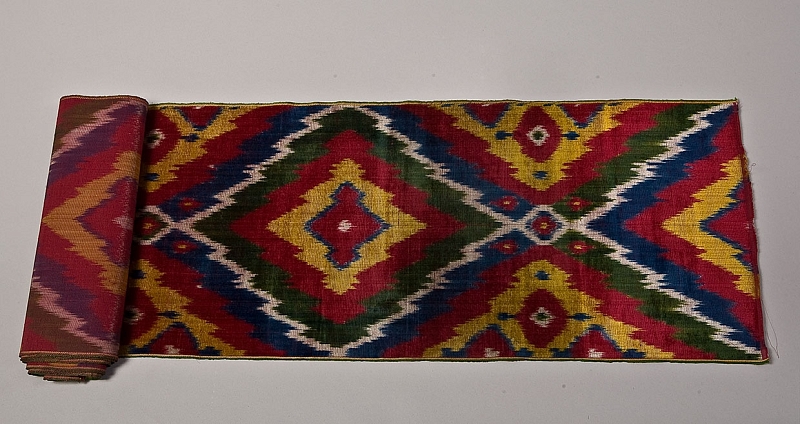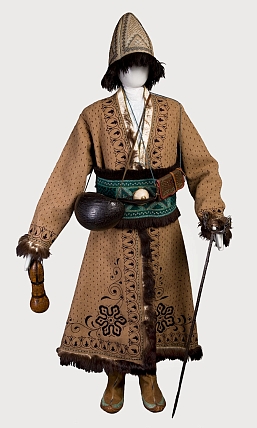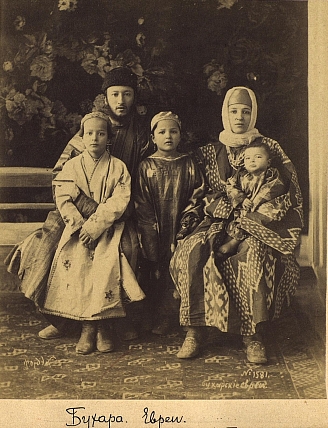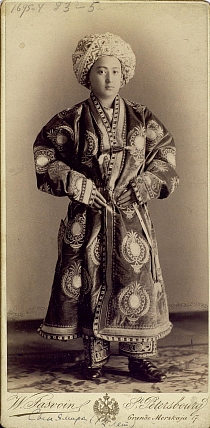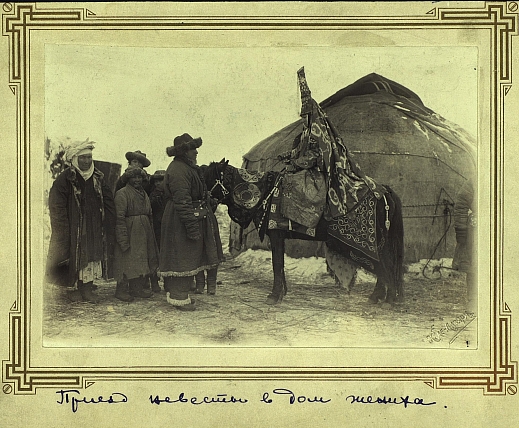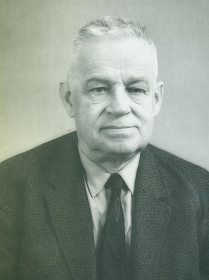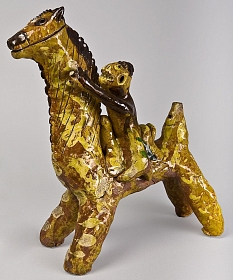- Administration
- Research Departments
- Arctic Research Center
- Europe Research Center
- Department of Australia, Oceania and Indonesia
- Department of America
- Department of Physical Anthropology
- Department of Archeology
- Department of Africa
- Department of East and Southeast Asia
- Department of Caucasus
- Department of Siberia
- Department of Central Asia
- Department of South and Southwest Asia
- Department of the History of Kunstkamera and 18th-century Russian Science (M.V. Lomonosov museum)
- Laboratory of Audiovisual Anthropology
- Laboratory "The International Center of Islamic Studies"
- Laboratory of Museum Technologies
- Management and Museum Services
Department of Central Asia
Contact Information
Address: 3, Universitetskaya nab., St.-Petersburg, 199034
Phone: +7 (812) 328-07-12; +7 (812) 328-08-12 (ext. 107)
E-mail: Maryam.Rezvan@kunstkamera.ru
Head of Department
Maryam REZVAN, Candidate of Sciences (Muslim manuscript tradition in the ethnographic context, magic practices of Muslim peoples)
Department Staff
Georgiy KALINKIN, Junior Reseacher
Valeiriya PRISCHEPOVA, Candidate of Sciences, Senior Researcher (study of the object and illustrative collections of the Department of Central Asia, provenance of the Museum’s collections, biography and activity of the collectors, and ethno-thematic characteristics of the collections)
Inga STASEVICH, Candidate of Sciences, Senior Researcher (ethnography of peoples of Central Asia, study of traditional material and spiritual culture, regional specifics of Central Asian Islam, gender aspects of culture, and modern ethnic processes, in particular forms of traditional culture adaptation in today’s world)
History of the Department
Special study of Central Asian topics became the task of a separate Museum department established in 1918. The Department of Central Asian Muslim Peoples, which largely inherited the functions of the Russian Committee for the Study of Central and East Asia established in 1903 was headed by the prominent Iranist I. I. Zarubin, founder of scientific Tajik and Pamir studies. It existed as the Department of Western and Middle Asia until the early 1970s, when it was renamed Department of Middle Asia. In the period between 1977 and 1989, the unit existed as Middle Asia, Kazakhstan and Caucasus Team, and after that, up to 2001, as the Department of Middle Asia. Its today’s name corresponds to the modern geopolitical definition of the region.
The making and development of the Department is directly or indirectly related to the names of a whole constellation of outstanding Russian explorers of the region in the center of Asia, such as V. V. Bartold, S. Ye. Malov, S. M. Dudin, A. N. Samoilovich, I. I. Zarubin, Ye. M. Peschereva, A. L. Troitskaya, E. G. Gafferberg, N. A. Kislyakov, S. M. Abramzon, R. R. Rahimov and many others. The Department was headed at different times by I. I. Zarubin, N. A. Kislyakov, S. M. Abramzon, L. I. Lavrov, V. P. Kurylev, and R. R. Rahimov; currently, by M. Ye. Rezvan.
In the summer of 1914, Zarubin jointly with French Iranist Robert Gauthiot set off on an expedition to sub-Pamir regions for linguistic and ethnographic research. This was how the systematic ethnographic study of Central Asia started. Zarubin continued his linguistic, folklore, and ethnographic research in the Pamirs and in Central Asia in later years. The largest-scale one was the Central Asian Ethnological Expedition of the USSR Academy of Sciences in 1926-1930. The results of this expedition without doubt were the greatest achievements of Russian science in the study of that region. In the end, it was they that determined the main area of research of the Department, whose fundamental works have covered and theoretically comprehended a broad range of relevant issues of ethnography and cultural anthropology of the region’s peoples. It is research into ethnic history and ethnogenesis, ethnic culture, family and marital relationships, concrete historical and local cultural forms, national cultural processes etc.
Among the essential works of the Department’s researchers of previous years are:
- Zarubin I. I. Beludjskiye skazki sobrannye I. I. Zarubinym [Baloch tales collected by I. I. Zarubin]. Leningrad: Izd-vo AN SSSR, 1932, 220 pp.
- KIslyakov N. A. Semya i brak u tadjikov. Po materialam kontsa XIX – nachala XX veka [Family and marriage of the Tajiks according to materials of the late 19th-early 20th century]. Moscow, Leningrad: Izd-vo AN SSSR, 1959, 268 pp.
- Peschereva Ye. M. Goncharnoye proizvodstvo Srednei Azii [Pottery in Central Asia]. Moscow, Leningrad: Izd-vo AN SSSR, 1959, 396 pp. (Proceeds of the Institute of Ethnography, new series, vol. 42), 396 pp.
- Gafferberg E. G. Beludji Turkmenskoi SSR [Baloch people of the Turkmen SSR]. Leningrad: Nauka, 1969, 270 pp.
- Abramzon S. M. Kirgizy i ikh etnogeneticheskiye i istoriko-kulturnye svyazi [The Kirghiz people and their ethnogenetic, historical, and cultural connections] . Leningrad, Nauka, 1971, 403 pp.
- Kurylev V. P. Skot, zemlya, obschina u kochevykh i polukochevykh kazakhov (vtoraya polovina XIX – nachalo XX veka) [Cattle, land, and community of nomadic and semi-nomadic Kazakhs (2nd half of the 19th – early 20th century]. St. Petersburg, 1998.
It was within the MAE RAS that the famous Russian school of Central Asian research emerged, related to the names of V. V. Bartold, I. I. Zarubin, and N. A. Kislyakov.
Essential topics of research
Currently, the Department’s researchers are engaged in research continuing the traditions of their great predecessors – the integrated study of the culture of Central Asian peoples (both nomadic and sedentary) in the aspect of dynamic nature and continuity of elements of tradition under the global transformations that have several times changed the worldview of the region’s population in the middle of Muslim Eurasia.
Essential Publications
In the last years, the department staff members have published these monographs:
- V. A. Prischepova. Kollektsii zagovorili: istoriya formirovaniya kollektsiy MAE po Srednei Azii I Kazakhstanu (1870—1940) [The collections are speaking: The history of generation of the MAE collections on Central Asia and Kazakhstan (1870-1940]. St. Petersburg, 2000.
- O. A. Solovyova. Liki vlasti Blagorodnoi Bukhary [Images of power of the Noble Bokhara]. St. Petersburg, 2002.
- V. Yu. Kryukova. Zoroastrizm [Zoroastrianism]. St. Petersburg, 2005.
- Gryozy o Vostoke (Russkiy avangard i shelka Bukhary). Katalog vystavki [Dreams of the Orient (Russian avant-garde and silks of Bokhara). Exhibition catalogue]. St. Petersburg, 2006
- Kulturnoye naslediye narodov Tsentralnoi Azii, Kazakhstana i Kavkaza [Cultural heritage of the peoples of Central Asia, Kazakhstan and the Caucasus ]. Publication editor: V. A. Prischepova. St. Petersburg, 2006 (Sbornik MAE, vol. 52)
- Tsentralnaya Aziya: traditsiya v usloviyakh peremen [Central Asia: Tradition in the age of changes]. Issue I. Publication editor: R. R. Rakhimov. St. Petersburg, 2007.
- N. S. Terletsky. A Persian-Language Work on the “Central Asian Makka” // Manuscripta Orientalia. XIII/1. St. Petersburg, 2007. Pp. 12—24.
- R. R. Rakhimov. Koran i rozovoye plamya (Razmyshleniya o tadjikskoi kulture) [The Quran and pink flames (Reflections on the Tajik culture). St. Petersburg, 2008.
- “Rakhmat-nameh.” Sbornik v chest 70-letiya R. R. Rakhimova [“Rahmat-nameh.” Collection in honor of the 70th anniversary of R. R. Rakhimov]. Publication editor: M. Ye. Rezvan. St. Petersburg, 2008.
- Traditsionnaya kazakhskaya kultura v sobraniyakh Kunstkamery [Traditional Kazakh culture in the Kunstkamera collections]. Publication editor: I. V. Stasevich. Almaty, 2008.
- K. S. Vasiltsov. Sistema etno-religioznykh predstavleniy o cheloveke v traditsionnoi culture iranskikh narodov (po materialam sochineniy Afdal ad-Dina Muhammada Kashani) [The system of ethno-religious beliefs about man in the traditional culture of Iranian peoples (following the works of Afdal ad-Din Muhammad Kashani]. Synopsis of a thesis for a Candidate Degree in History. St. Petersburg, 2009.
- Tsentralnaya Aziya: traditsiya v usloviyakh peremen [Central Asia: Tradition in the age of changes]. Issue II. Publication editors: R. R. Rakhimov, M. Ye. Rezvan. St. Petersburg, 2009.
- V. A. Prischepova. Illyustrativnye kollektsii po narodam Tsentralnoi Azii vtoroi poloviny XIX – nachala XX veka v sobraniyakh Kunstkamery [Illustrative collections on the peoples of Central Asia of the 2nd half of the 19th and early 20th century in the Kunstkamera collections]. St. Petersburg, 2011.
- M. Ye. Rezvan. Koran v sisteme musulmanskoi magii [The Quran in the system of Muslim magic]. St. Petersburg, 2011.
- I. V. Stasevich. Sotsialnyi status zhenschiny u kazakhov: traditsii i sovremennost [Social status of Kazakh women: Traditions and Modernity]. St. Petersburg, 2011.
- Tsentralnaya Aziya: Traditsiya v usloviyakh peremen [Central Asia: Tradition in the age of changes]. Issue III. Publication editors: R. R. Rakhimov, M. Ye. Rezvan. St. Petersburg, 2012
- Tadjiki: istoriya, kultura, obschestvo [The Tajiks: History, culture, society]. Publication editor: M. Ye. Rezvan. St. Petersburg, 2014.
- E. A. Rezvan, M. E. Rezvan. The Qur’an and Muslim Manuscript Tradition. Selected articles. SPb., 2013
- A. Yu. Kudriavtceva, E. A. Rezvan, A Man in the Qur'an and Pre-Islamic Poetry. SPb., 2016
- S. Beloruusova. Nagaibaks: dynamics of ethnicity. SPb., 2019
Expeditions
Field research has always been a priority line of the Department’s activity. As part of the Central Asian Ethnographic Expedition, which was headed by chief researcher Dr. R. R. Rahimov for many years, the researchers annually travel in expeditions to Tajikistan, Uzbekistan (K. S. Vasiltsov, N. S. Terletsky), Kazakhstan and Kirghizia (I. V. Stasevich). V. Yu. Kryukova has been a member of the Marghian Archeological Expedition led by V. I. Sarianidi since 2007, and supervisor of the expedition project “Cult Objects, Articles, and Rites of Modern Zoroastrians of Iran and India” since 2011. In 2008, under the projects “Expeditions Are Going On” and “Idjma’ = Consent,” Muslim regions of China (Xinjiang Uyghur Autonomous Region and Qinghai Province) were visited (M. Ye. Rezvan). In 2010, M. Ye, Rezvan and I. V. Stasevich took part in the expedition project “The Heart Memory Mirror: Kazakhstan in the creative heritage of S. M. Dudin.” In 2012, the RFH supported the expedition project “Muslim hagiography of valley areas of Central Asia” supervised by K. S. Vasiltsov. Since 1998, I.V. Stasevich has been conducting active field ethnographic studies in the Republic of Kazakhstan (East Kazakhstan, Almaty, South Kazakhstan, West Kazakhstan, Aktobe Oblast) and the Kyrgyz Republic (Issyk-Kul, Naryn, Talas, Osh, Batken regions). The main tasks of the field trips are to fix the current state of ritual culture, the process of the emergence of new practices, the reproduction and preservation of traditional cultural heritage. S. Yu. Belorussova conducts ethnographic research in the Ural-Volga region among the Nagaybaks, Kazakhs, Tatars, Kryashen, Russian Cossacks.
Research Projects
The three-year project with the Central State Museum of the Republic of Kazakhstan for issuing a full annotated catalogue of the Department’s Kazakh collections was completed in 2013.
The researchers have completed work on a section of the research topic “Central Asia: Man and his worldview in the mirror of time” (2013-2016).
Currently, the Department’s researchers are working on the topics “‘Russian Orientalism’ as a scientific field and historical and cultural phenomenon” (supervisor: M. Ye. Rezvan) and “Illustrative collections of the Kunstkamera” (supervisor: V. A. Prischepova) (2017-2019)
Joint international projects:
The joint project with the Central State Museum of the Republic of Kazakhstan (http://www.csmrk.unesco.kz/common.htm) to issue a full annotated catalogue of the Department’s Kazakh collections has been completed.
Work is underway for the joint project with the Museum’s partner The Institute of Ismaili Studies (London) (http://iis.ac.uk/home) to edit for publication a photo album dedicated to the scientific heritage of I. I. Zarubin.
Grants
Work has been completed under RFH Grant 14-01-00421 “Bokhara and Khiva Khans’ and ambassadors’ missive letters and credentials of the late 17th and early 18th century (translation and redaction)” (supervisor: M. Ye. Rezvan).
Conferences
Together with the Department of Caucasus, Lavrov (Central Asian-Caucasian) readings are held annually. The first readings took place in 1976 at the initiative of the outstanding Soviet Caucasus expert L. I. Lavrov (1909-1982), who then led the Kunstkamera group of the Caucasus, Central Asia and Kazakhstan. Since the early 1990s the conference bears his name.
Collections
The collections of the Department contain about 13,000 archival units of material and spiritual culture objects related to sedentary agricultural, Turkic nomadic, and Iranian nomadic cultures. The custodians of the collections of the Department of Central Asia are N. B. Kolpakidi and R. V. Berzina of the Department of Records and Storage of the MAE RAS. The acquisition of the objects by the Museum from Central Asian regions mainly started in the second half of the 19th century. Among the most valuable acquisitions of that time is a collection of beautiful things presented by inhabitants of the Kazakh steppe to Nicholas II (received during the travel of the future Russian Emperor in the East). This collection, the core of which is steel battle axes of a Kazakh jigit and elite leather belts, is complemented with headgear (saukele) of a Kazakh bride and shaman musical instruments (kobyz). The culture of nomadic and semi-nomadic Iranians (Baloch, Hazaras, and Jamshidi) is represented in particular by portable dwellings with a set of picturesque objects of interior.
In all, the Department’s depositories have five mobile dwellings (yurts), two of which represent the culture of Turkic nomads (Kazakh and Kirghiz), and three, of Iranian ones. The MAE owns excellent collections on the sedentary population of Central Asia (Tajiks and sedentary Uzbeks). Of special value are the so-called Emperor collections, i.e. luxurious specimens of hand-made silk, half-silk, and velvet abrbandi fabrics by Central Asian craftsmen of the late 19th and early 20th century. These masterpieces of woven patterning of the sedentary population known in the West as ikat, apart from horse harness items done in silver and gold, were presented to Russian Emperors of the Romanov house by Emirs of Bokhara. The matters for such presents were events of a national scale. One of them was the 300th anniversary of the Royal House celebrated in 1913. The presents were sent via a peculiar diplomatic Bokhara-St. Petersburg Silk Route. Embassies with rich gifts went from Bokhara for the Coronation Day celebrated annually, and for the birthdays of the Czar and Czarina.
The Department’s archives also contain objects covering the traditional culture of the sub-Pamir Iranians. Most of them were collected by I. I. Zarubin in 1914. In 2005, an excellent collection was acquired showing textile patterning traditions of Samarkand and Bokhara. Cultural objects of Uzbekistan’s Arabs (Qarshi region) were also acquired.
An extremely important part of the Department’s archives is a unique collection of illustrative materials (over 25,000 archival units) covering the real life and aspects of traditional household culture of the region’s peoples, starting from 1870. Most of these materials have been scanned and are available for viewing.
The Department’s researchers have published a catalogue of object collections on the region’s peoples:
